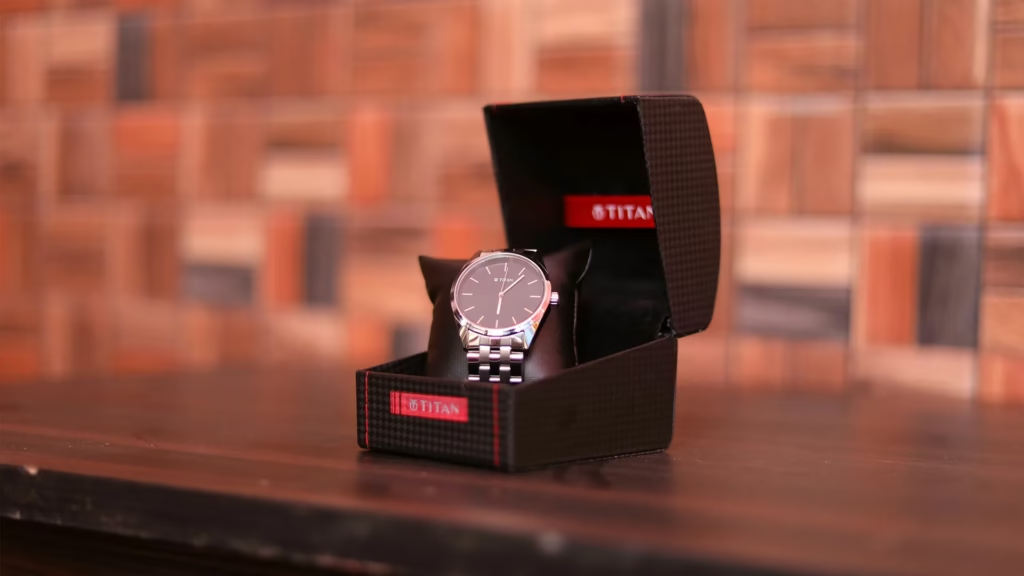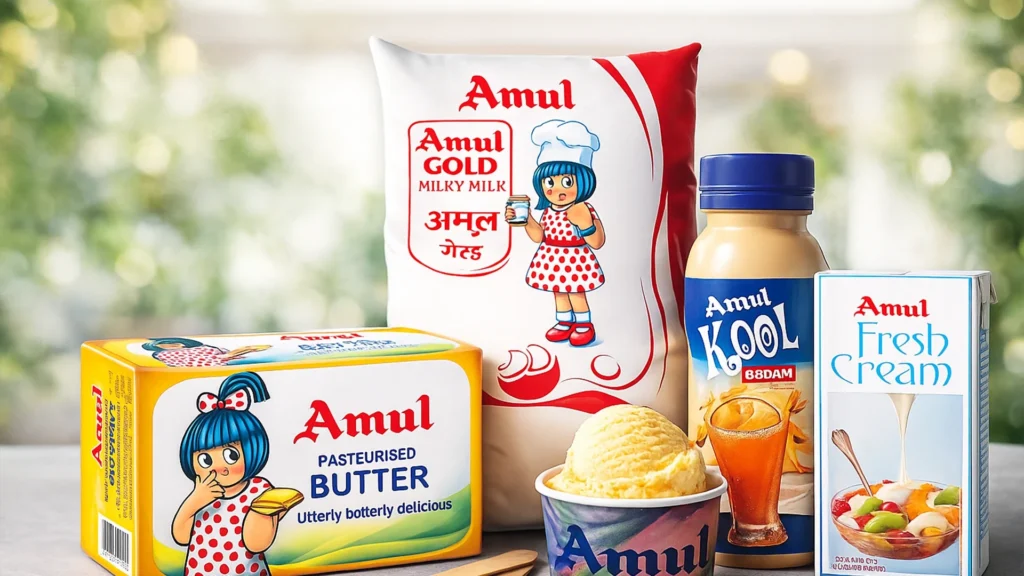In the early 1980s, Indian watches meant HMT. The government-owned company had monopolized India’s watch market for decades, producing functional, durable timepieces that told time accurately but inspired zero emotional connection. Watches were utilities, not fashion. You bought one HMT, wore it for years, and that was that. Then in 1984, Tata Group launched Titan as a joint venture with the Tamil Nadu government, and everything changed. Titan didn’t just sell watches. It sold aspiration, style, and the idea that what you wore on your wrist said something about who you were.
The Titan brand faced skepticism initially. Why would Tata, known for trucks and steel, enter watches? How could a new brand compete with HMT’s entrenched distribution and brand loyalty? But Titan had advantages HMT lacked: design sensibility borrowed from global trends, marketing that understood emerging middle-class aspirations, and most importantly, the Tata name representing trust and quality. Within a decade, Titan became India’s largest watch company. By the 2000s, it commanded over 60% market share, a dominance it maintains today. Titan didn’t just beat HMT. It redefined what watches meant in India, transforming them from functional necessities into fashion accessories and aspirational purchases that marked life milestones like graduations, first jobs, and weddings.
The Tata Advantage and Trust Factor
Titan’s biggest asset was the name backing it: Tata. In India, Tata Group represents integrity, quality, and trust built over more than a century. When Titan launched, the Tata name immediately gave it credibility that typical startup brands take decades to earn. Indians assumed Titan watches would be well-made, fairly priced, and backed by proper service because Tatas don’t compromise on quality. This trust factor was invaluable in convincing consumers to abandon familiar HMT watches for a new brand.
The Tata connection also gave Titan access to capital, distribution networks, and management talent that accelerated growth. While HMT struggled with government bureaucracy and outdated manufacturing, Titan invested in modern Swiss and Japanese technology, hired designers who understood global trends, and built marketing teams that grasped India’s changing aspirations. The company approached watches as fashion and lifestyle products, not engineering items, a mindset shift that HMT, trapped in utility thinking, could never make.
Titan leveraged Tata’s reputation strategically in advertising. Early campaigns emphasized Swiss manufacturing quality combined with Indian affordability, positioning Titan as world-class watches at prices middle-class Indians could afford. The tagline “The watch that India wears with pride” reinforced both the Tata trust factor and aspirational positioning. Customers weren’t just buying watches but buying into the Tata promise of quality, making Titan purchases feel safe and smart.
Manufacturing Excellence and Quality Assurance
Titan invested heavily in manufacturing quality that justified its premium over cheaper alternatives. The company collaborated with Swiss watchmakers to learn precision assembly and quality control, then adapted those standards to Indian manufacturing. This hybrid approach delivered reliability that matched imports at prices far lower. Titan watches rarely failed, and when they did, the extensive service network fixed them quickly. This reliability reinforced the Tata trust factor and generated word-of-mouth marketing worth millions.
The Multi-Brand Strategy That Captured Every Segment
Titan became India’s most aspirational watch brand by recognizing that different consumers had different needs and identities. A single brand couldn’t appeal to everyone, so Titan created sub-brands targeting specific segments. This multi-brand strategy let Titan capture market share across price points and psychographics while maintaining brand separation that preserved each sub-brand’s positioning.
Titan (main brand) positioned as premium aspiration for achievers. These watches cost Rs 5,000-50,000, targeting professionals, businesspeople, and success-minded individuals. The designs were elegant, refined, and sophisticated. Owning a Titan signaled you’d arrived professionally. The brand’s advertising showed successful people in aspirational settings, reinforcing that Titan was the watch of achievement.
Fastrack launched in 1998 targeting youth and rebellion. While parents wore Titan, teenagers and college students wanted something different. Fastrack offered bold designs, bright colors, and street-smart aesthetics at Rs 1,000-5,000. The brand’s irreverent advertising celebrated breaking rules and being yourself, positioning Fastrack as anti-establishment cool. This captured the massive youth market that viewed traditional Titan as too corporate.
Sonata addressed value-conscious buyers who wanted Tata reliability without premium pricing. Priced Rs 500-3,000, Sonata offered basic functionality and decent design for budget buyers. This prevented customers from defecting to cheap unbranded watches or competitors like Timex. Sonata’s positioning was honest: good watches at fair prices, no frills but no compromise on quality.
Raga targeted women specifically, recognizing that women bought watches differently than men. Women valued fashion, elegance, and jewelry-like design over technical specs. Raga watches featured slimmer profiles, feminine aesthetics, and designs that worked as accessories not just timepieces. This focused approach captured women’s market share that competitors ignored or addressed inadequately.
Edge and Premium Sub-Brands
Beyond mass-market brands, Titan launched Edge for premium minimalism, featuring ultra-slim watches priced Rs 10,000-30,000+ targeting design-conscious professionals. The brand competed with international luxury watches, offering comparable aesthetics at fraction of prices. Titan also introduced limited edition collections and collaborations with designers, creating aspirational premium offerings that demonstrated the company’s range and design credentials. This multi-tier strategy meant Titan had offerings for first-time watch buyers and experienced collectors, capturing customers across their entire life journey.
Distribution and Retail Excellence Across India
Titan became India’s most aspirational watch brand partly through product and marketing but also through unmatched distribution. The company built 1,500+ exclusive World of Titan stores across India, from metros to tier 2 and tier 3 cities. These stores provided premium retail experiences with trained staff, elegant displays, and service centers, making watch buying feel special rather than transactional. Walking into a World of Titan store felt aspirational, reinforcing the brand’s positioning.
Beyond exclusive stores, Titan established presence in 10,000+ multi-brand retail outlets, ensuring availability everywhere watches were sold. This omnipresence meant when Indians decided to buy watches, Titan was always an option, often displayed more prominently than competitors. The distribution muscle crushed smaller brands that couldn’t afford similar retail footprints and made Titan the default choice through sheer availability.
After-sales service differentiated Titan critically. The company established service centers in 300+ cities, far more than any competitor. This network meant customers could get watches serviced locally rather than shipping them to distant centers. Service quality was consistent, with trained technicians using genuine parts. This post-purchase support built loyalty because customers knew their Titan purchases were backed by proper service, something cheap alternatives and even some international brands couldn’t promise in India.
The Showroom Experience
World of Titan stores were designed as aspirational spaces where customers could explore, try, and experience watches without pressure. The air-conditioned environments with comfortable seating and knowledgeable staff created experiences that contrasted sharply with typical Indian retail’s chaos. This retail environment made buying Titan watches feel premium and special, justifying higher prices and creating brand loyalty through positive shopping experiences that customers remembered and returned for.
Advertising That Sold Dreams, Not Features
Titan’s marketing never competed on technical specifications. The company understood that Indian consumers bought watches emotionally, not rationally. Advertising focused on life moments, aspirations, and identity rather than features. The famous “Titan: Be More” campaign epitomized this approach, showing people achieving more, becoming more, and expressing themselves through their watches. The ads didn’t mention quartz movements or water resistance but sold the feeling of accomplishment and style.
The campaigns were distinctively Indian while maintaining global aesthetic sensibility. Titan ads featured Indian actors, Indian settings, and Indian aspirations, making the brand feel locally relevant rather than foreign import. Yet the production quality, cinematography, and styling matched international luxury watch advertising, positioning Titan as world-class while remaining accessible. This balance between global aspiration and local relevance resonated deeply with Indians seeking modernity without losing cultural connection.
Titan also pioneered experiential marketing in India through in-store events, celebrity partnerships, and brand activations. The company sponsored fashion weeks, partnered with Bollywood celebrities, and created limited editions that generated PR and social media buzz. These activations kept Titan top-of-mind and reinforced its fashion-forward positioning, ensuring the brand remained relevant to younger generations even as core customers aged.
Emotional Storytelling and Life Moments
Titan’s advertising genius lay in associating watches with life milestones. Ads showed fathers gifting Titans to sons on graduation, couples exchanging watches on anniversaries, professionals buying Titans on first job promotions. These narratives made Titan watches symbols of achievement and emotional markers, not just products. When Indians thought about celebrating success or marking special occasions, they thought of Titan, creating purchase intent that transcended utility or even fashion into emotional necessity.
Conclusion: When Trust Meets Aspiration
Titan became India’s most aspirational watch brand by combining Tata Group’s trust with sophisticated understanding of Indian consumers’ evolving aspirations. The company recognized that post-liberalization India in the 1990s and 2000s had growing middle and upper-middle classes wanting products that reflected their success and modernity. Titan provided exactly that: world-class watches at Indian prices, backed by a name Indians trusted, available everywhere through unmatched distribution, and marketed as symbols of achievement rather than just timepieces.
The multi-brand strategy showed Titan’s strategic sophistication, capturing youth through Fastrack while parents wore Titan, serving budget buyers through Sonata while maintaining premium positioning with Edge, and addressing women specifically through Raga while men bought Titan. This segmentation prevented competitors from finding uncovered niches while maximizing Titan’s market capture across demographics and price points. The company built a watch empire not through single product excellence but through understanding that different Indians wanted different things and serving all those needs under one corporate umbrella.
Titan’s 60%+ market dominance three decades after launch proves that in India, trust beats everything. The Tata name gave Titan credibility competitors couldn’t match, and the company justified that trust through quality products, extensive service, and marketing that understood Indian aspirations. Today, Titan isn’t just India’s largest watch company but a case study in how Indian brands can dominate home markets by combining global quality standards with deep local understanding, creating products and brand experiences that resonate more authentically than international competitors despite their prestige and resources. Titan made watches aspirational in India by understanding that aspiration isn’t about foreign luxury but about products that help Indians express who they’re becoming, and no global brand could sell that dream as convincingly as one carrying the most trusted name in Indian business.



